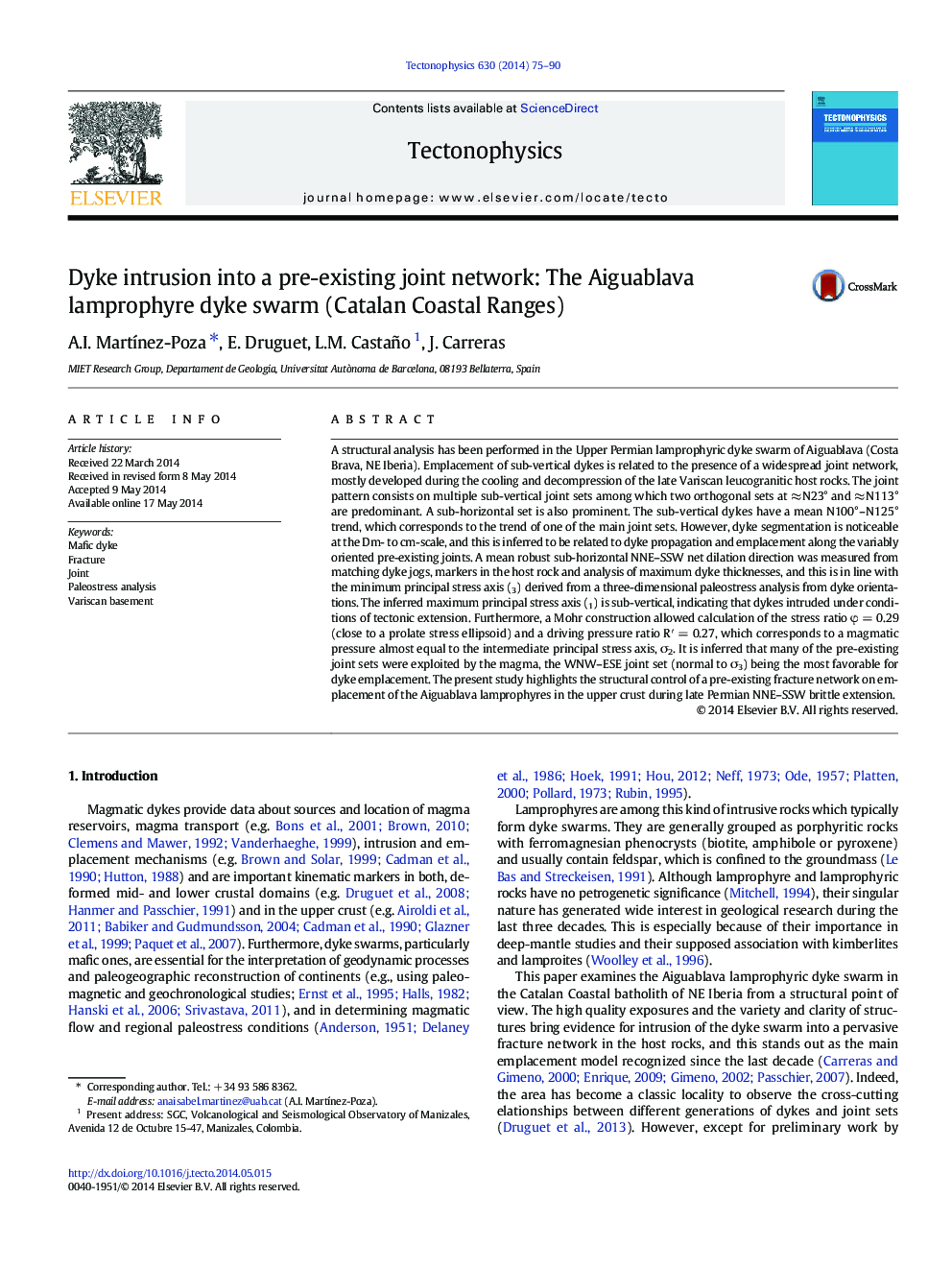| Article ID | Journal | Published Year | Pages | File Type |
|---|---|---|---|---|
| 6433676 | Tectonophysics | 2014 | 16 Pages |
â¢The late Permian Aiguablava dyke swarm (NE Iberia) intruded into jointed granites.â¢3-D structural analyses allow characterizing emplacement and paleostress conditions.â¢Emplacement took place into the brittle crust during NNE-SSW regional extension.â¢Dyke segmentation is due to magma propagation along variably oriented joints.â¢Magmatic pressure was close to equal to the intermediate principal stress, Ï2.
A structural analysis has been performed in the Upper Permian lamprophyric dyke swarm of Aiguablava (Costa Brava, NE Iberia). Emplacement of sub-vertical dykes is related to the presence of a widespread joint network, mostly developed during the cooling and decompression of the late Variscan leucogranitic host rocks. The joint pattern consists on multiple sub-vertical joint sets among which two orthogonal sets at â N23° and â N113° are predominant. A sub-horizontal set is also prominent. The sub-vertical dykes have a mean N100°-N125° trend, which corresponds to the trend of one of the main joint sets. However, dyke segmentation is noticeable at the Dm- to cm-scale, and this is inferred to be related to dyke propagation and emplacement along the variably oriented pre-existing joints. A mean robust sub-horizontal NNE-SSW net dilation direction was measured from matching dyke jogs, markers in the host rock and analysis of maximum dyke thicknesses, and this is in line with the minimum principal stress axis (3) derived from a three-dimensional paleostress analysis from dyke orientations. The inferred maximum principal stress axis (1) is sub-vertical, indicating that dykes intruded under conditions of tectonic extension. Furthermore, a Mohr construction allowed calculation of the stress ratio Ï = 0.29 (close to a prolate stress ellipsoid) and a driving pressure ratio Râ²Â = 0.27, which corresponds to a magmatic pressure almost equal to the intermediate principal stress axis, Ï2. It is inferred that many of the pre-existing joint sets were exploited by the magma, the WNW-ESE joint set (normal to Ï3) being the most favorable for dyke emplacement. The present study highlights the structural control of a pre-existing fracture network on emplacement of the Aiguablava lamprophyres in the upper crust during late Permian NNE-SSW brittle extension.
Graphical abstractDownload full-size image
